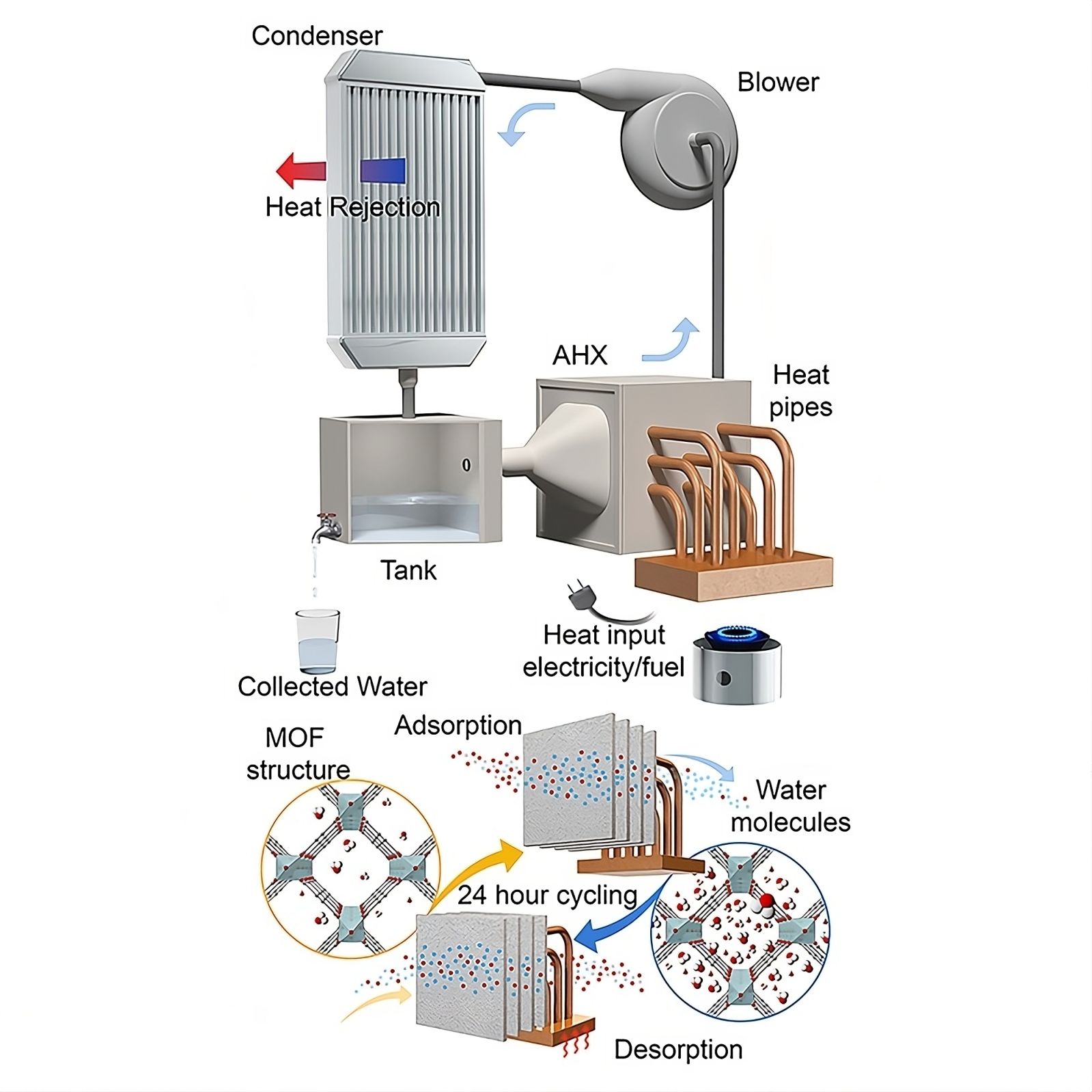This invention allows for the collection of 20 liters of drinking water per day from the air in arid regions
Published by Cédric,
Article author: Cédric DEPOND
Source: Cell Reports Physical Science
Other Languages: FR, DE, ES, PT
Article author: Cédric DEPOND
Source: Cell Reports Physical Science
Other Languages: FR, DE, ES, PT
Follow us on Google News (click on ☆)

The Earth's atmosphere contains an estimated amount of water in billions of cubic meters. Despite this potential, current atmospheric water harvesting technologies remain inefficient, costly, and bulky. The new prototype developed by the University of Utah team overcomes these limitations through an innovative approach. This device, both compact and powered by conventional fuel, uses adsorbent materials to capture and release water in liquid form merely by applying heat.
The prototype relies on metal-organic frameworks, hygroscopic materials with a particular affinity for water. These materials, compared to Lego blocks due to their modifiable structure, allow for the separation of water molecules from other gases present in the air. The team used aluminum fumarate, which was shaped into panels to maximize contact surface with the air. A single gram of this material can offer an internal surface equivalent to two football fields, enabling it to capture a significant amount of water.
This project has drawn the interest of the United States Department of Defense, which sees it as a way to maintain hydration for soldiers operating in remote and arid areas. By funding this development, the military seeks to reduce the need to transport large amounts of water, which burdens operational logistics. The prototype, by producing water on demand, could transform how soldiers are supplied with water, thus lightening their load on the field.
Beyond its military applications, this technology offers a potential solution for civilian populations facing water shortages. The device could be installed in homes located in isolated or drought-affected areas, supplying 4 to 5 gallons (15 to 20 liters) of drinking water per day, meeting the daily needs of a family. Unlike other technologies, this one does not rely on solar panels, making it more practical under extreme arid conditions, usable both day and night.
In terms of environmental impact, opting for fuels over solar energy addresses practical concerns, though it raises questions about long-term sustainability. The research team is already considering improvements to reduce the device's ecological footprint while maintaining its efficiency. With this innovation, a future where potable water is accessible to everyone, even in the most arid regions, seems increasingly attainable.